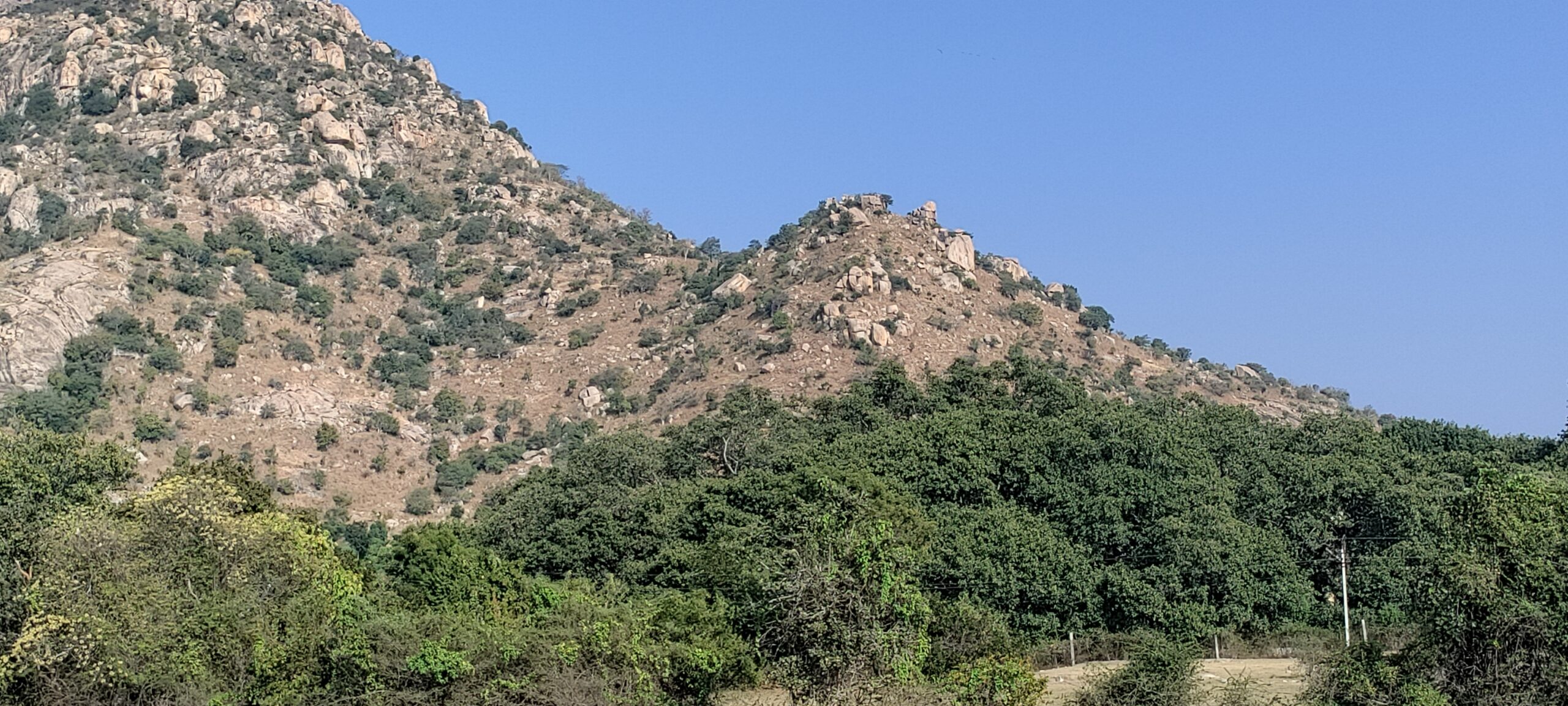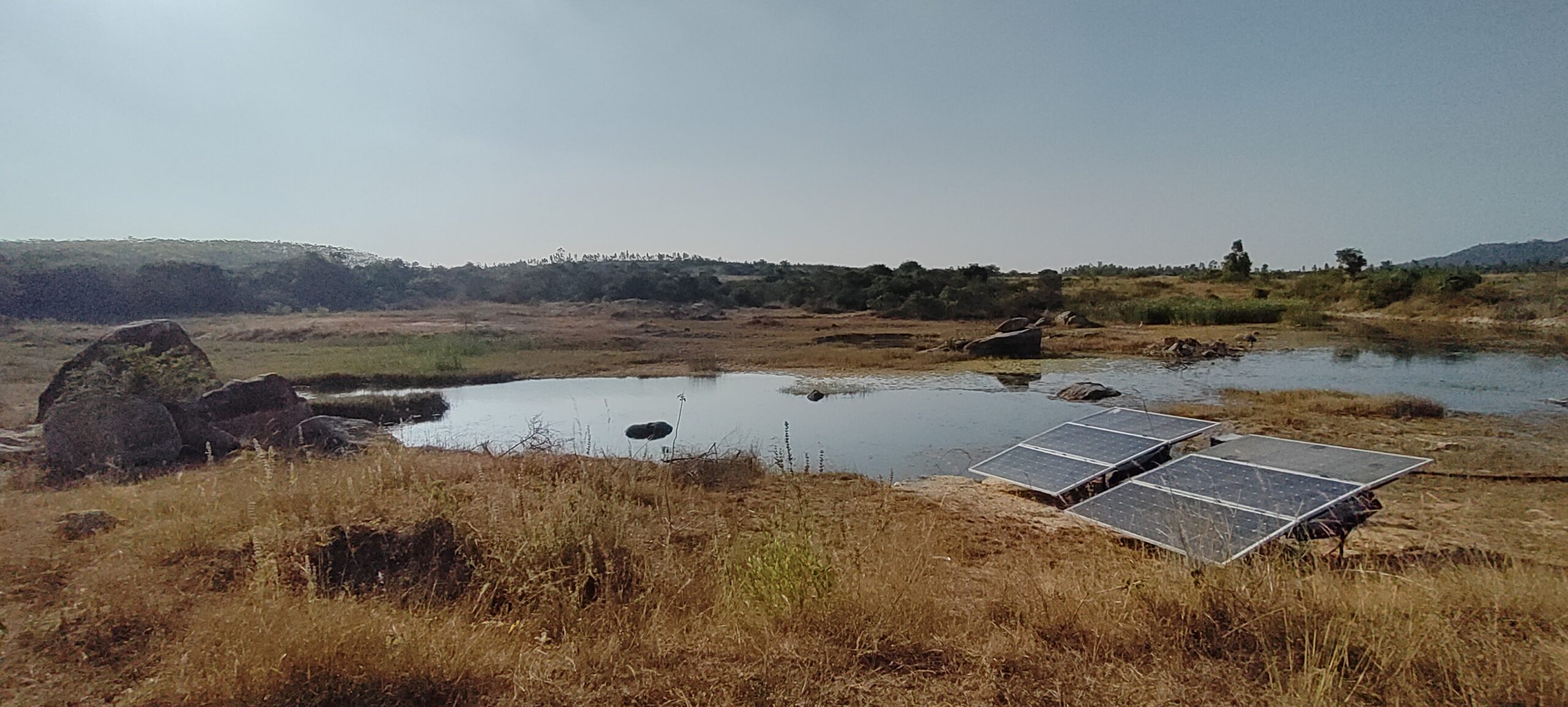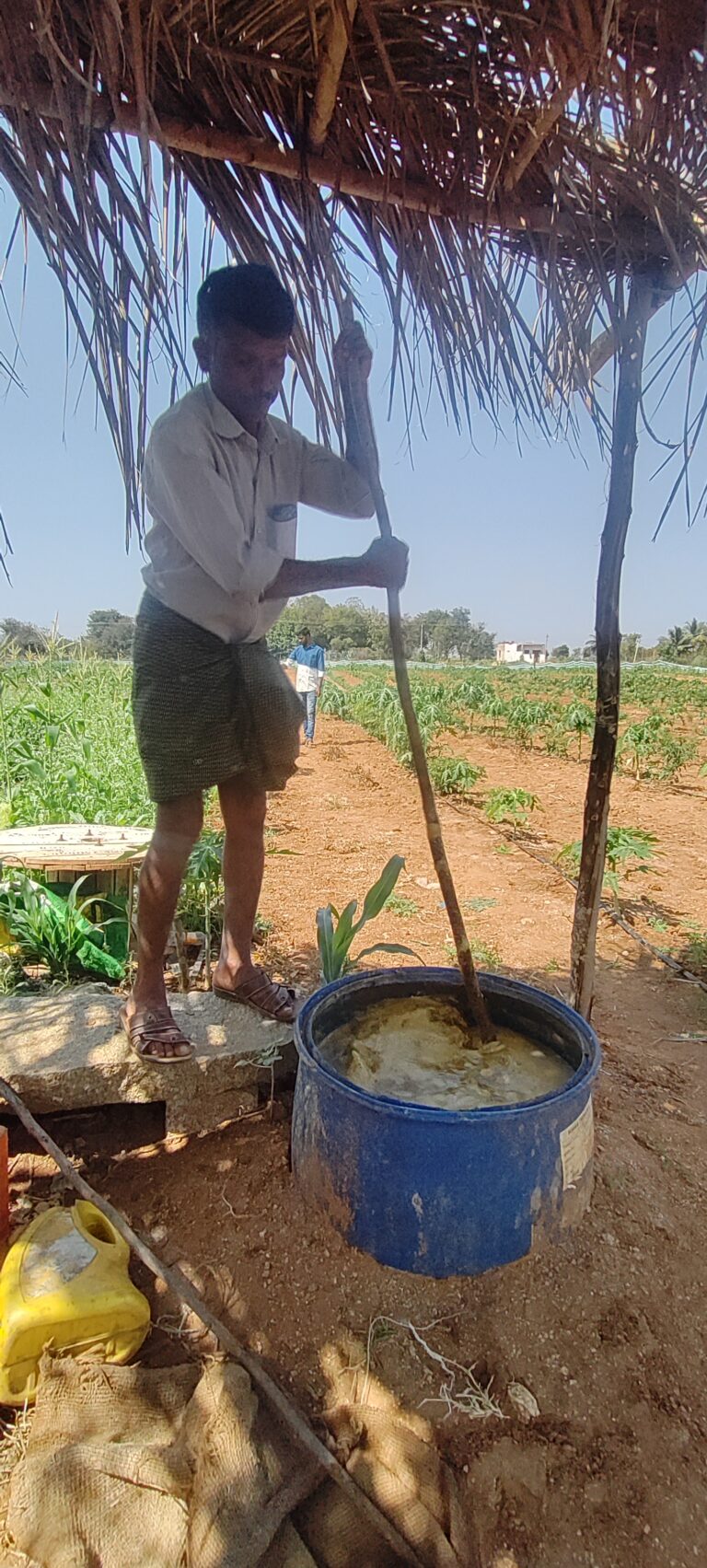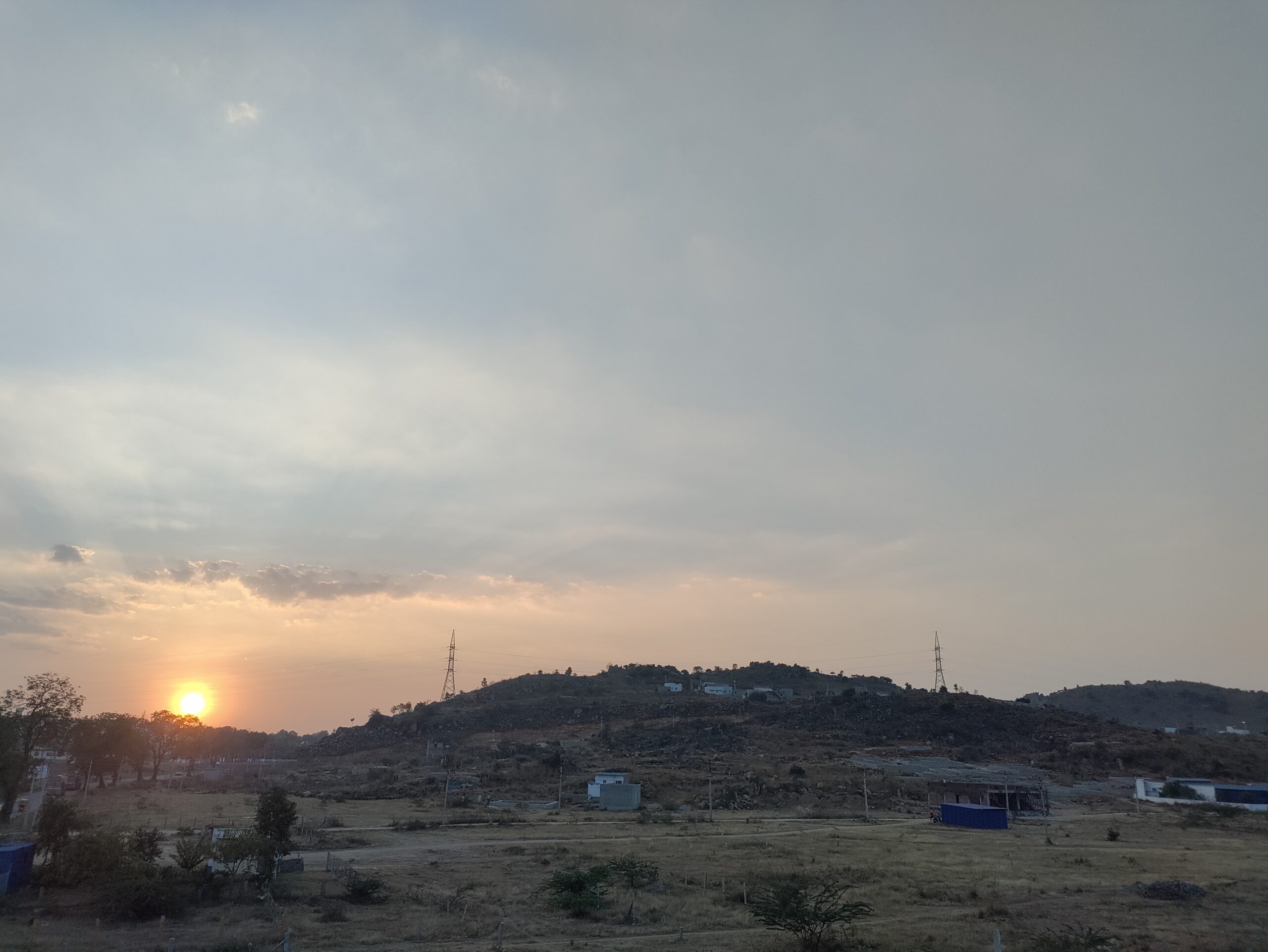Get in Touch
We are here to help you 7 days a week and respond within 24 hours. Plus, you can find most answers to your questions right on FAQ page.

Watershed Support Services and Activities Network (WASSAN)
Home >
Blog
A repository bank of our latest research, training materials, media sources to help organisations networks grow
Bhavik Shah | Jun 13, 2024

World’s largest single tree canopy of a scared banyan tree in Kadiri | Photo: Bhavik Shah
Nestled in a rain shadow region between the Eastern and Western Ghats, the Rayalaseema region of Andhra Pradesh paints a picture of resilience amidst adversity. This semi-arid landscape, home to eight districts, has long been shaped by the delicate dance between its people and the elements. The lifeline of Rayalaseema lies in the fickle embrace of the South-West monsoon, whose annual rainfall of 500-600 mm falls woefully short of the national average.
Yet, for centuries, the hardy communities of this region have carved out an existence from this parched terrain, adapting their craft-based lifestyle and subsequent agricultural practices to the harsh realities of their environment. Rain-fed farming and subsistence agriculture have become the backbone of livelihoods, providing sustenance amidst the harsh realities of poverty.
Rediscovering the Vijayanagara Legacy
To understand the current water crisis in Rayalaseema, one must delve into the region’s extraordinary past. During the prosperous Vijayanagara Empire, which ruled over large swathes of southern India from the 14th to 16th centuries, water management was of paramount importance.
The Vijayanagara rulers recognized the vital role that irrigation systems played in agricultural development and economic prosperity. They undertook extensive projects to build tanks, wells, canals, and other water infrastructure, transforming the semi-arid landscape into a thriving agricultural hub. Crucially, the administration of these irrigation networks was entrusted to village-level governing bodies, who meticulously managed water resources. Disputes over
water usage were settled by local authorities or prominent figures, ensuring a community-centric approach to water stewardship.
Religious institutions also played a pivotal role. Irrigation was considered a sacred duty, and temple authorities often funded and maintained the water infrastructure, reducing the burden on the state. This symbiotic relationship between community, religion, and natural resource management enabled the Vijayanagara rulers to foster a thriving agricultural economy. Various taxes and incentives were implemented to encourage farmers and sustain the region’s water networks, leading to a period of unprecedented growth and prosperity.

Kadiri Narasimha temple with a large pushkarini (temple tank)
The Kadiri Narasimha temple is facing east; with a large pushkarini (temple tank) in the north east corner of the temple. “This is a temple pond but not being maintained. No treatment for maintaining the minimum bathing standards. Water is stale. Temple administration should do a lot to keep it fit for taking a holy dip. The sentiment of the devotees is being hurt.” Ganesh, a regular temple visitor and farmer from Kadiri.
Contemporary Challenges and Preservation Efforts
Today, Rayalaseema faces a delicate dance with the elements, much like its ancestors. The region’s reliance on the volatile South-West monsoon has intensified, as climate change and erratic rainfall patterns exacerbate the existing water crisis. Research conducted from 1951 to 2015 has revealed a significant decline in the region’s South-West monsoon rainfall, with a 15-20% decrease compared to the 1960s. This pattern of diminishing precipitation has dealt a severe blow to the region’s rain-fed farming communities.
Compounding the problem are ongoing disputes over the sharing of Krishna River water with neighboring states, which have led to occasional violence. The consequences of this water crisis are far-reaching. The once-thriving network of historical irrigation systems has fallen into disrepair. For example, the Kadiri Narasimha Temple Pushkarini, once a revered water body, now suffers from neglect and poor maintenance. Similarly, the Pala Bavi tank, renovated in 2018, now lies abandoned, with water bottles and wrappers strewn around its banks.


Pala Bavi (4 kms from Akkidi FPO shop and former WASSAN office) | Photo: Bhavik Shah
Hari Vaasam narrated “A devotee, on the way to the Kadiri temple, dug this tank up in one night. People say the depth is not known. Such a significant place but no maintenance at all. Water bottles and wrappers all around the bavi.” This tank was renovated back in 2018 with the funding of Manige Manohar Naidu, Inagaluru.
The current state of Pala Bavi is captured in this video from 2 months ago
The consequences of this water crisis have been far-reaching. The once-thriving network of historical irrigation systems, built during the Vijayanagara era, has fallen into disrepair. The Avilala tank (Click here), a vital water body in the region, was even bulldozed and leveled to host a political gathering in 1992, symbolizing the wanton disregard for Rayalaseema’s natural heritage.
Similarly, the Rayalacheruvu tank (Click here), once the largest in the Rayalaseema region, has fallen victim to encroachment and neglect. An estimated 1,500 acres of its 2,000-acre bed have been illegally occupied, eroding its holding capacity and groundwater recharge capabilities. The story of the Swarnamukhi River (Click here) is no less tragic, as unrestrained occupation has rendered the once-vibrant waterway lifeless.
Across Rayalaseema, the region’s approximately 20,000 minor irrigation tanks, which once formed an intricate chain-link system, have dwindled in number and functionality. The area and holding capacity of these vital water bodies have shrunk due to the encroachment of their bunds and beds, disrupting the delicate balance of the region’s hydrology.
Forging a Sustainable Future
Yet, amidst the gloom, there are glimmers of hope. Across Rayalaseema, efforts to revive the region’s historical water infrastructure and conserve groundwater resources have gained momentum, offering a glimpse of a more sustainable future.
Preserving Historical Sites
Efforts should be made to preserve and protect historical irrigation infrastructure, such as tanks and wells, to maintain natural and cultural heritage. These sites can also be leveraged for community-based tourism, providing economic benefits to local residents. For instance, the Thimmamma Marrimanu, a sacred banyan tree near Kadiri, has become a significant tourist attraction managed by the Forest Department. This banyan tree holds a world record to be the world’s largest single tree canopy. Similar initiatives could be extended to other historical water bodies, leveraging their cultural and historical significance to attract visitors and generate income for local residents.
Modernizing Irrigation System
Building on the historical legacy, modern irrigation systems should be upgraded and expanded to meet the growing agricultural demands of the region. This includes incorporating modern technologies while respecting traditional knowledge. For example, utilizing solar pump irrigation systems and GIS mapping for better resource allocation can significantly enhance water management efficiency.

Solar pump irrigation at WASSAN’s agroecology project | Photo: Bhavik Shah
Community Engagement
Local communities should be actively involved in water management and decision-making processes to ensure sustainable use of water resources. This can be achieved through community-led initiatives and participatory governance models. By empowering the region’s inhabitants to be stewards of their own natural resources, a sense of ownership and collective responsibility can be fostered, leading to more sustainable water practices.
Davanam, a small aromatic herbaceous plant that grows in the states of Andhra Pradesh, Karnataka and Tamil Nadu, is an integral part of the annual Brahmotsavams of the historic Sri Lakshmi Narasimha Swamy Temple at Kadiri in Satya Sai district. Around 44 per cent of Kadiri’s population comprises Muslims. And it is the Muslims who have traditionally been offering davanam, along with pepper, to Lord Narasimha Swamy during all days of the Brahmotsavams, more so on the day of Brahma Rathotsavam. The davanam – Artemisia Pallens – offered to Lord Narasimha Swamy is said to appease Him.
“Rich quality davanam grows only in the Kadiri area. It has traditionally been offered to Lord Narasimha Swamy,” underlines K. Satyanarayana Rao, a devotee from Kadiri. The markets of Kadiri are currently flooded with davanam because of the Brahmotsavams. Incidentally, a major product of davanam is its oil. It is largely exported to France, USA, Germany, Japan and The Netherlands. (Click here)..
A Woman-Farmer Success Story in Davanam Cultivation in Natural Farming Method
Promoting Sustainable Agricultural Practices
Encouraging natural farming methods, as seen in Kadiri and Madanapalle, can enhance soil health and water conservation. Training programs and support for farmers transitioning to sustainable practices are essential. For example, the use of jeevamrutam, intercropping systems, and solar pump irrigation, as highlighted in the field report, can significantly improve agricultural resilience.
An impromptu visit to this farm revealed the farmer engaging in the jeevamrutam making process for his farm. When asked why he started he pulled up his shirt and showed surgical stitches across his torso and tummy. He had undergone a major medical procedure to cure him of cancer, caused by chemicals that he used in his farming practices. Now, he seems better and smiles while he explains the health of the soil and the plants has been much better since the last 7 years. And now he looks forward to growing his own fodder, seed crops and also making his own natural water source to keep water buffaloes for himself and his neighbours.

A farmer making Jeevamrutham | Photo: Bhavik Shah
Research and Education
Further research and educational initiatives should be undertaken to document and disseminate knowledge about traditional irrigation practices and their relevance to contemporary challenges. Schools and local institutions can play a pivotal role in this process. Documenting the traditional knowledge and practices of Rayalaseema’s water management systems can not only preserve this invaluable heritage but also inform contemporary solutions to the region’s water crisis.

Bookkeeping is an integral part of land, water & soil management for many farming families in this region that helps WASSAN better assess the situation.


Due to the increasing usage of bio-inputs for natural farming many women are leading their communities with entrepreneurship in Bio-input Resource Centres | Photo: Bhavik Shah
Conclusion
As Rayalaseema’s communities continue to navigate the treacherous waters of an uncertain future, the lessons of the past offer a glimmer of hope. By rediscovering the wisdom of their ancestors and adapting it to modern realities, the region can forge a path toward a more sustainable and resilient water future. The journey ahead may be arduous, but Rayalaseema’s people have weathered countless storms throughout history. With a steadfast commitment to water stewardship and a deep appreciation for their cultural legacy, this arid heartland of India can once again thrive, overcoming adversity and flourishing amidst its natural constraints.

Photo: Bhavik Shah
#naturalfarming #rayalaseema #watersecurity #rainfed #irrigation #water #agroecology
We are here to help you 7 days a week and respond within 24 hours. Plus, you can find most answers to your questions right on FAQ page.
Plot No. 685 & 686, Street No. 12, Narasimha Swamy Colony,
Nagole, Hyderabad – 500 068, Telangana, India
Tel No: +91 (40) 29555295
Mail: mail@wassan.org
Watershed Support Services and Activities Network (WASSAN) © 2024 by WASSAN is licensed under CC BY-SA 4.0
@2024 | Watershed Support Services and Activities Network (WASSAN)